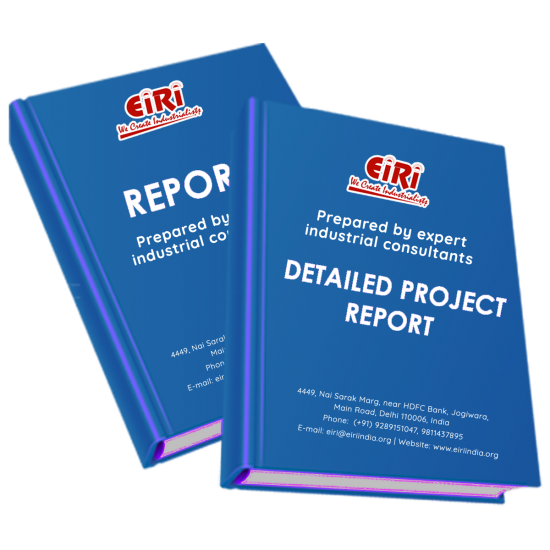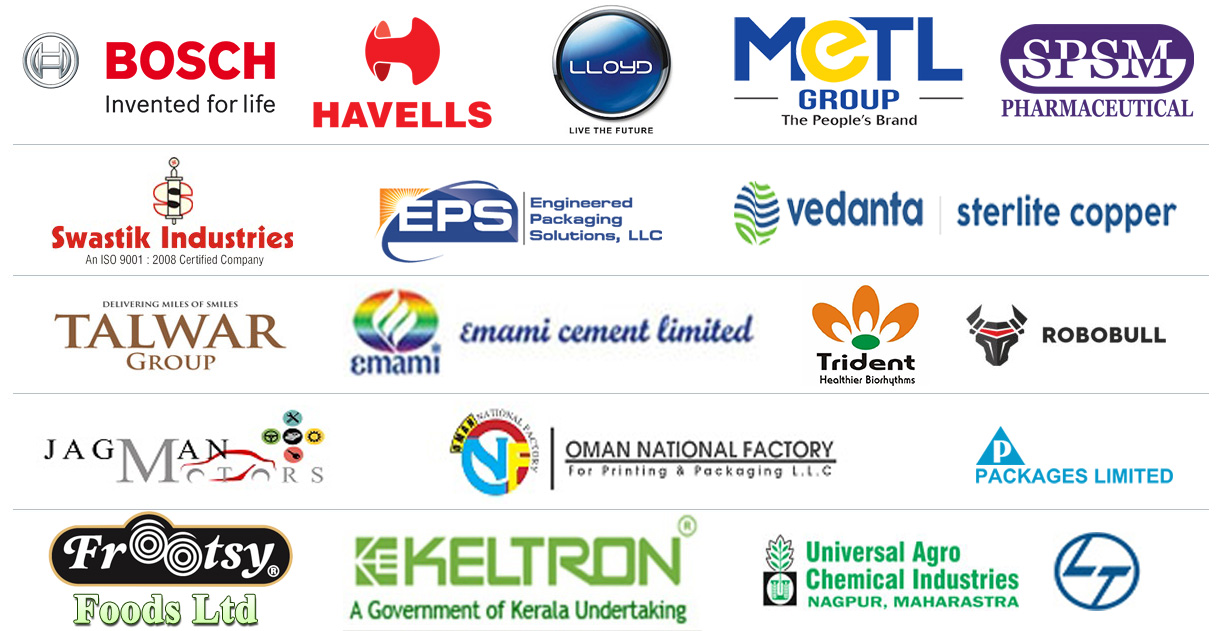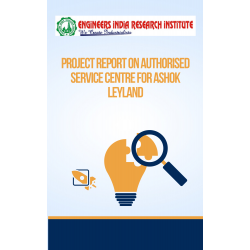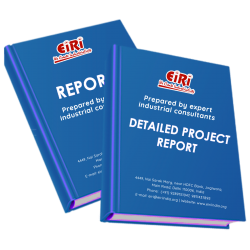Detailed Project Report on Assembly of Air-Conditioner/Chest Freezer/Refrigerator under One Production Line




- More than 40 years of experience
- Managed by expert industrial consultants
- ISO 9001-2015 Certified
- Registered under MSME, UAM No: DL01E0012000
- 24/5 Research Support
Get your quesries resolved from an industry expert. Ask your queries before report or book purchase. - Custom Research Service
Speak to the our consultant to design an exclusive study to serve your research needs. - Quality Assurance
All reports are prepared by highly qualified consultants & verified by a panel of experts. - Information Security
Your personal & confidential information is safe & secure.
ASSEMBLY OF AIR-CONDITIONER/CHEST FREEZER/REFRIGERATOR UNDER ONE PRODUCTION LINE
[EIRI/EDPR/1085] J.C.: 9729US$
INTRODUCTION
The early attempts at air conditioning were aimed solely at providing human comfort. Coider fields were sought to be covered in the nineteenth century and it was during this period that the foundation of modern air conditioning was laid with the controlling of humidity conditions in cotton textiles mills. In the initial stages, the air in the textile mills was humidified by evaporating water from steam ports in order to reduce breakages and static electricity of cotton yarns. The principles of air conditioning were then gradually extended to industries like printing. Candy making, wood production, tobacco manufacturing and to the storage of food and other perishable products. By 1897 the first form of humidification, namely an air washer, was patented and used on a wider scale. It cooled and humidified in addition to its primary function of cleaning the air.
The term air-conditioning was first suggested and used in 1906 by an American Stuart W. Cramer, who developed an air conditioning system which could control both humidity and temperature. At about the same time, another American, Willis H. Carrier, devised a control air conditioner unit of the air washer type which automatically controlled the humidity and saturation temperature of the air. With the development of new machines the applications of air conditioning were extended to the fields of commerce and transport. Commercial air-conditioning was started with the more heatness. In 1930, a small unitary air-conditioner was first installed in a railway coach operating in the Baltimore and Ohio railroad of the USA. In 1931 entire train running between New York and Washington was air-conditioned.
The definition of air conditioning as approved by the American Society of Heating and Ventilating Engineers is as follows - "the simultaneous control of all or at least the first three of those factors affecting both the physical and chemical conditions of the atmosphere with in any structure. These factors include temperature, humidity, motion, distribution, dust, bacteria, odors, toxic gases and ionization, most of which affect in greater or less degree human health or comfort."
Accepted trade definitions consider air conditioning to be the control of temperature, humidity, motion and cleanliness of the air within any structure, adding the qualifying prefix "Summer" to those systems designed only to maintain temperature and humidity at a point below the normal outside summer condition and "Winter" to those systems designed only to maintain elevated temperatures and humidities during cold weather. Systems designed to afford the stipulated control during all seasons of the year and usually designated as "Year-Round" air conditioning systems.
AIR CONDITIONING SYSTEMS
A basic air conditioning system involves the treatment of air in buildings. Such treatment essentially includes the proper adjustment and control of the air with regard to its cooling or heating, humidification or dehumidification, ventilation and cleaning.
Cooling: Cooling of air for hot weather comfort is carried out by transfer of heat from the air to a surface or medium at a lower temperature, which may be cool fluid, spray of water, a low pressure, evaporating, liquid-vapour mixture, or water ice. Air-cooling is also achieved by using refrigeration systems.
Heating: In climates where the temperature drops below 18o for any considerable period during the year, artificial heating becomes necessary. The heating systems are based on (i) warm air (ii) hot water (iii) radiation heating and (iv) heat pump.
Humidity Control: In addition to temperature relatively humidity is a very important factor in determining is a very important factor in determining human comfort is that the nearer to a completely saturated state the air in a room becomes, the less tendency there is for evaporation to take place from the body. Evaporation is a factor in the surface cooling of the skin and contributes greatly to hot weather comfort. On the other hand, the atmosphere in a room which is artificially heated during cold weather is very likely to prove deficient in moisture unless some means of humidification is provided.
COST ESTIMATION
Plant Capacity 100 Units/Day
Land & Building (2000 sq.mt.) US$ 3.72 Lac
Plant & Machinery US$ 4.66 Lac
Working Capital for 3 Months US$ 20.82 Lac
Total Capital Investment US$ 29.58 Lac
Rate of Return 73%
Break Even Point 30%
CONTENTS
INTRODUCTION
AIR CONDITIONING SYSTEMS
HEATING OF UNITS
1. COOLING UNIT
2. AIR CONDITIONING UNIT
3. COOLING AIR CONDITIONING UNIT
4. SELF-CONTAINED COOLING UNIT
5. FREE DELIVERY TYPE
6. PRESSURE TYPE UNIT
7. FORCED CIRCULATION AIR COOLER
CONSTRUCTION OF VARIOUS UNITS
FREEZE AND REFRIGERATORS
SUBSTITUTES
TYPES OF FREEZERS
CHEST FREEZERS
UPRIGHT FREEZER
TYPES OF REFRIGERATORS
TYPES OF REFRIGERATORS
UNDER COUNTER MICROWAVE OVENS
APPLICATION OF REFRIGERATERS AND CHEAST FREEZERS
WIDESPREAD COMMERCIAL USE
HOME AND CONSUMER USE
CURRENT APPLICATIONS OF REFRIGERATION
APPLICATION OF AIRCONDITIONERS
BIS SPECIFICATION
INDIAN MARKET OF AIR CONDITIONERS
COMMERCIAL DEMAND AREA
GROWTH AVENUES
MAINTENANCE ASPECT
GLOBAL MARKET OF AIR CONDITIONERS
GLOBAL SALES OF AIR CONDITIONING SYSTEMS TO REACH 85 MILLION UNITS IN 2012, ACCORDING TO NEW REPORT BY GLOBAL INDUSTRY ANALYSTS
AIR CONDITIONERS
GLOBAL SCENARIO
REFRIGERANTS
GO GREEN
LATEST DEVELOPMENTS
REFRIGERATOR AND FREEZER
BASE CASE SCENARIO FOR THE RESIDENTIAL SECTOR
BASELINE UEC
BASELINE UEC FOR ALL END USES IN 2000 AND 2030
BASE CASE CONSUMPTION SCENARIO
HOUSEHOLD ELECTRICITY CONSUMPTION IN 2000 AND 2030 (URBAN AND RURAL)
ENERGY EFFICIENCY SCENARIOS
TARGETS ACHIEVABLE THROUGH EFFICIENCY PROGRAMS
EFFICIENCY SCENARIOS
REFRIGERATORS
AIR CONDITIONERS
THE RANGE AND RELATIVE IMPORTANCE OF THE ATTRIBUTES OF REFRIGERATORS
THE DIFFERENCE ANALYSIS OF THE UTILITY COEFFICIENT ON INDIVIDUAL LEVEL
THE RANDOM EFFECT COEFFICIENT VARIANCE AND MODEL RESIDUAL
VARIANCES OF REFRIGERATOR
PURCHASING POWER
PRICE ANTICIPATION
CONSUMPTION HABIT
CUSTOMERS’ SUPPORT
CONSUMER DURABLE MARKET ANALYSES
REFRIGERATORS
MARKET SIZE AND FORECAST DEMAND
REFRIGERATOR MARKET IS COMPOSED OF TWO SEGMENTS OF URBAN AND RURAL AREAS
RURAL HOUSEHOLD NET INCOME AND POSSESSION OF ELECTRICAL HOME APPLIANCES
MAJOR PLAYERS
FOREIGN FIRMS PRODUCING REFRIGERATORS IN CHINA
MARKET SHARE
TABLE 5 BEIJING’S MARKET SHARE OF REFRIGERATOR
GRAPH 1 BEIJING’S MARKET SHARE OF REFRIGERATOR
PLANT LAYOUT
MANUFACTURING PROCESS OF REFRIGERATORS AND CHEST FREEZERS
THE MANUFACTURING PROCESS
OUTER CABINET AND DOOR
INNER CABINET
COOLING SYSTEM
TESTING AND ADDING ACCESSORIES
QUALITY CONTROL
BY PRODUCTS/WASTE
ASSEMBLING PROCESS OF AIR CONDITIONER
AN ASSEMBLED UNIT AIR CONDITIONER CONSISTS OF FOLLOWING PARTS:-
1. COOLING COILS
2. FANS AND BLOWERS
3. HEAT PUMP
4. FILTERS
(A) DRY FILTER
(B) VISCOUS FILTERS
CONTROLS
CHOICE OF REFRIGERANT
INSTALLATION
SHEET METAL PARTS
TESTING OF REFRIGERATERS
DESCRIPTION OF TEST SPECIMENS
TEST PROCEDURE
INSTRUMENTATION
GENERAL TEST CONDITIONS
TEST RESULTS
REFRIGERATOR TESTS
FREEZER TESTS
DISCUSSION OF TEST RESULTS
CONCLUSIONS
THE OBSERVED EFFECTS OF THE VARIABLES STUDIED WERE AS FOLLOWS
SUPPLIERS OF PLANT & MACHINERY AND RAW MATERIALS
REFRIGERATORS
CHEST FREEZERS
AIR CONDITIONERS
COLOUR MASTERBATCHES
REFRIGENT GASES
NUT, BOLTS & SCREWS
GI SHEETS
COPPER TUBES
CAPILLARY TUBES
PLASTICS
AIR FANS
AIR FILTERS
ROTARY SWITCHES
THERMOSTATE SWITCH
RELAYS
CAPACITORS
BLOWERS
CONDENSING COIL
EVAPORATOR COILS
REFRIGERANT COMPRESSORS
APPENDIX – A:
01. PLANT ECONOMICS
02. LAND & BUILDING
03. PLANT AND MACHINERY
04. OTHER FIXED ASSESTS
05. FIXED CAPITAL
06. RAW MATERIAL
07. SALARY AND WAGES
08. UTILITIES AND OVERHEADS
09. TOTAL WORKING CAPITAL
10. TOTAL CAPITAL INVESTMENT
11. COST OF PRODUCTION
12. TURN OVER/ANNUM
13. BREAK EVEN POINT
14. RESOURCES FOR FINANCE
15. INSTALMENT PAYABLE IN 5 YEARS
16. DEPRECIATION CHART FOR 5 YEARS
17. PROFIT ANALYSIS FOR 5 YEARS
18. PROJECTED BALANCE SHEET FOR (5 YEARS)
How to Make Project Report?
Detailed Project Report (DPR) includes Present Market Position and Expected Future Demand, Technology, Manufacturing Process, Investment Opportunity, Plant Economics and Project Financials. comprehensive analysis from industry covering detailed reporting and evaluates the position of the industry by providing insights to the SWOT analysis of the industry.
Each report include Plant Capacity, requirement of Land & Building, Plant & Machinery, Flow Sheet Diagram, Raw Materials detail with suppliers list, Total Capital Investment along with detailed calculation on Rate of Return, Break-Even Analysis and Profitability Analysis. The report also provides a birds eye view of the global industry with details on projected market size and then progresses to evaluate the industry in detail.
We can prepare detailed project report on any industry as per your requirement.
We can also modify the project capacity and project cost as per your requirement. If you are planning to start a business, contact us today.
Detailed Project Report (DPR) gives you access to decisive data such as:
- Market growth drivers
- Factors limiting market growth
- Current market trends
- Market structure
- Key highlights
Overview of key market forces propelling and restraining market growth:
- Up-to-date analyses of market trends and technological improvements
- Pin-point analyses of market competition dynamics to offer you a competitive edge major competitors
- An array of graphics, BEP analysis of major industry segments
- Detailed analyses of industry trends
- A well-defined technological growth with an impact-analysis
- A clear understanding of the competitive landscape and key product segments
Need Customized Project Report?
- Ask for FREE project related details with our consultant/industry expert.
- Share your specific research requirements for customized project report.
- Request for due diligence and consumer centric studies.
- Still haven't found what you're looking for? Speak to our Custom Research Team
About Engineers India Research Institute:
Note: We can also prepare project report on any subject based on your requirement and country. If you need, we can modify the project capacity and project cost based on your requirement.
Our Clients

Our Approach
- Our research reports comprehensively cover Indian markets (can be modified as per your country), present investigation, standpoint and gauge for a time of five years*.
- The market conjectures are produced on the premise of optional research and are cross-accepted through associations with the business players
- We use dependable wellsprings of data and databases. What's more, data from such sources is handled by us and incorporated into the report
Why buy EIRI reports?
- Our project reports include detailed analysis that help to get industry Present Market Position and Expected Future Demand.
- Offer real analysis driving variables for the business and most recent business sector patterns in the business
- This report comprehends the present status of the business by clarifying a complete SWOT examination and investigation of the interest supply circumstance
- Report gives investigation and top to bottom money related correlation of real players/competitors
- The report gives gauges of key parameters which foresees the business execution























